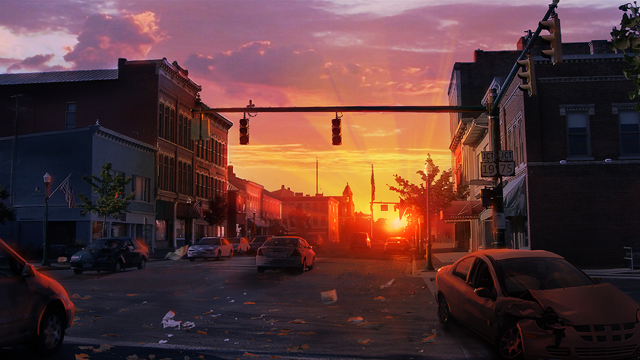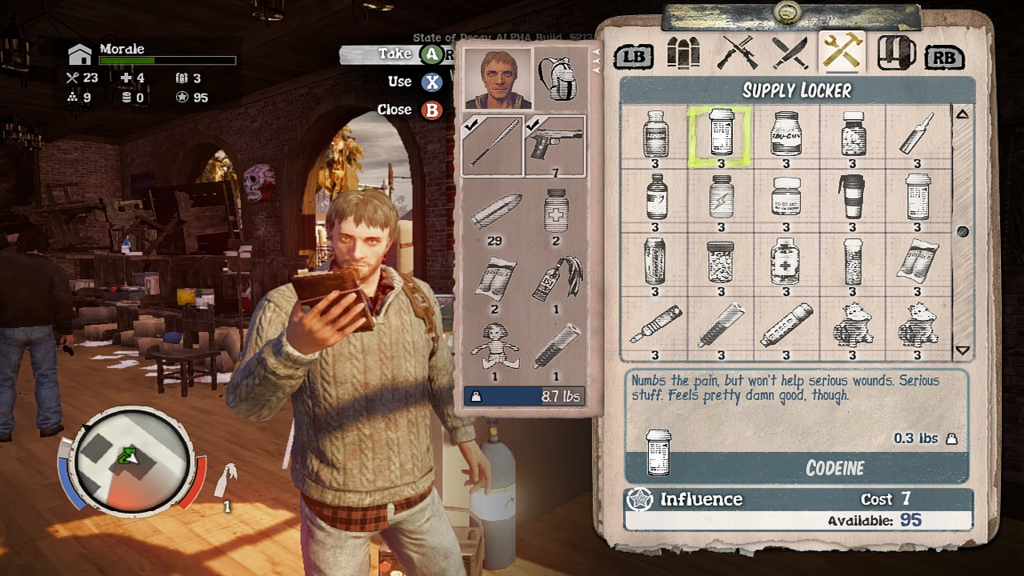The state of mind behind State of Decay
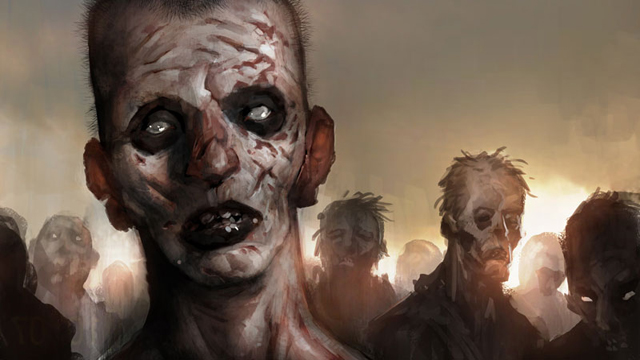 We’ve all thought about it: the end of days. Life, as we know it, over. Our laws, our society, our grande vanilla rooibos tea lattes, all gone, and we’re left with a staggering view of a world that’s indifferent of our existence. There’s no shortage of inventive ways to envision that demise, but the destruction-du-jour is contagion, with a twist. Infected by a mythical super-strain, our bodies succumb to the infection, wither and die. Reanimated a short time later, they shuffle (or sprint, depending on your inspiration) across the empty remains of our cities, towns and suburbs, catering to the most basic of impulses — to feed.
We’ve all thought about it: the end of days. Life, as we know it, over. Our laws, our society, our grande vanilla rooibos tea lattes, all gone, and we’re left with a staggering view of a world that’s indifferent of our existence. There’s no shortage of inventive ways to envision that demise, but the destruction-du-jour is contagion, with a twist. Infected by a mythical super-strain, our bodies succumb to the infection, wither and die. Reanimated a short time later, they shuffle (or sprint, depending on your inspiration) across the empty remains of our cities, towns and suburbs, catering to the most basic of impulses — to feed.
But the true draw, the appeal even, of an undead apocalypse isn’t the madness of the moment, it’s the days and weeks afterward. The life after life-as-we-know-it; the fitful consequences of our actions in an existence without margins for error, and how we stack up against that uncertainty. Undead Labs, the Washington-based, zombie-obsessed, fledgling development studio wants to realize that future, virtually, and give you the keys to a whole new life in a State of Decay.
It would be easy to disregard State of Decay as yet another hack at the deadest of horses; the freshmen efforts of a freshly congealed studio, cashing in on the ubiquitous sub-genre that refuses to die. Yet dismissing State with knee-jerk cynicism would be a shame, because amidst the death and disease and the hordes of shambling townsfolk, lies something infinitely more ambitious than a justified shooting spree — but more on that shortly.
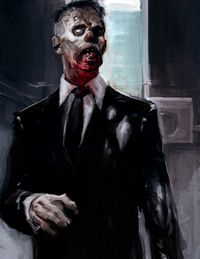 To truly understand what makes State of Decay special, to know its potential, is to know the minds behind the end of the world. Undead Labs is the brainchild of Jeff Strain – an industry veteran with the kind of credentials that elicit arched-eyebrow double takes – who founded the studio with a group of like-minded individuals in pursuit of a lofty goal. Create a realistic, familiar world, populate it with dynamic, true to life inhabitants, and deform it with extinction-level contagion. Then play in the ashes.
To truly understand what makes State of Decay special, to know its potential, is to know the minds behind the end of the world. Undead Labs is the brainchild of Jeff Strain – an industry veteran with the kind of credentials that elicit arched-eyebrow double takes – who founded the studio with a group of like-minded individuals in pursuit of a lofty goal. Create a realistic, familiar world, populate it with dynamic, true to life inhabitants, and deform it with extinction-level contagion. Then play in the ashes.
For three years, the members of Undead have shared an impassioned dialogue with the community through a series of articles exploring the philosophy, the motivation and the realization of what they’re trying to achieve. The latest broadcast from that source came earlier this month, from Strain himself, who announced Undead Labs had successfully generated every piece of content to be shipped within State of Decay. Now the team polishes, they balance, they work and rework until what they have is what they want – and Jeff Strain, writing with a voice of accomplished pride, and fatigue and relief, reflects on the journey so far.
“We started with a simple idea: simulate the zombie apocalypse,” writes Strain in his latest blog. “We sketched out our plan for State of Decay in big, bold strokes. We would focus on survival. We’d have meaningful choices. We’d have fast, sweet action. We’d provide the tools to develop unique survival strategies. Above all else, we would have the apocalypse simulator we all dreamed of every time the credits rolled on a great zombie flick.”
To hear Strain describe his vision is to peek into the collective imaginations of countless would-be survivalists, secretly – or not so secretly, in Undead Labs’ case – plotting their own strategies for the day their neighbors come to dine. The fantasy works within the infinite possibilities of the imagination, but to create it, even virtually, with any degree of authenticity – let alone to the scale Undead is attempting – is wildly ambitious.
Though, as Strain explains, that’s precisely what’s needed, “The world of State of Decay had to feel real,” he continues, “and as players, we needed to feel we had choices. Not just options, but the choices available to us here in the real world.” So just how does one replicate the complexity of reality in a digital environment? Well, you can’t. It’s why the focus of survival horror shifts toward unrestrained jump scares, rather than practicality, because it’s much easier to script a dozen frenzied monstrosities erupting from the sheetrock than to program a realistic sensory system.
While Undead Labs isn’t trying to capture the spark of life in a bottle, they’re taking steps in that direction. “Noise, echos, light, motion, resource depletion, morale, energy — all of those things needed to be modeled,” Strain explains, “and the inhabitants of the world designed to react and respond to them naturally. It was a daunting challenge, but one we thought was essential to creating a true survival experience.”
That commitment to realism is a double-edged sword when it comes to simulating survival. In the real world, people don’t always make it until morning. In real life – people die. Strain expounds, “Along the way, we frequently pushed up against the boundaries of traditional game design wisdom. What if death was really…death? Suddenly the zombie threat becomes meaningful. Then you want stealth, distraction, sneaky tactics, and home base fortifications.”
Now the overwhelming scope of State of Decay comes into focus. One principle, realism, sets off a domino effect of “then what about this” scenarios. “Fortifications? That implies guard towers, barricades, perimeter defense, and land mines,” Strain points out. “Land mines? They don’t have those at the sporting goods store, and besides, that store would be looted bare within days of the outbreak, so we’d have [to] learn how to build our own. Looting? Well, looting (or more politely, “scavenging”) is an inevitable part of the apocalypse. But it has to be realistic. A looted store needs to stay looted, and food, ammo, and building materials need to be found in locations that make logical sense.”
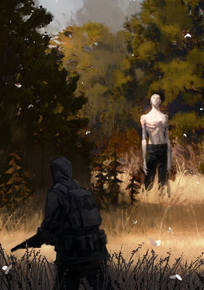 With such branching detail, it’s easy to envision State of Decay going the way of vaporware. A title too ambitious, bogged down by its commitment to life-like simulation and the nebulous details therein. After all, at its heart, this industry is full of dreamers, and it’s easy to dream big, as dreamers are wont to do. Videogame history is littered with creations that couldn’t possibly have lived up to their toted potential – victims of visions too grand to sustain.
With such branching detail, it’s easy to envision State of Decay going the way of vaporware. A title too ambitious, bogged down by its commitment to life-like simulation and the nebulous details therein. After all, at its heart, this industry is full of dreamers, and it’s easy to dream big, as dreamers are wont to do. Videogame history is littered with creations that couldn’t possibly have lived up to their toted potential – victims of visions too grand to sustain.
What Undead Labs sees, isn’t an infinitely expanding facsimile of realistic survival. It’s a game, about zombies. But even games about zombies might strive to offer more than shambling target dummies. “Oh, we’ve had to make some tough choices along the way to stay within a reasonable development timeframe (believe me, we could add “just one more thing” forever if we let ourselves), and we also had to keep in mind that this is supposed to be a fun game, rather than a strict simulation of reality,” says Strain. “We just think that fun doesn’t have to be meaningless or without consequence, and if anything, being deeply engaged is the most fun you can have.”
“The end of the road is in sight. We’re incredibly excited to get State of Decay into your hands,” Strain finishes, eager to deliver the coming apocalypse – but not as excited as we are, to survive it.


